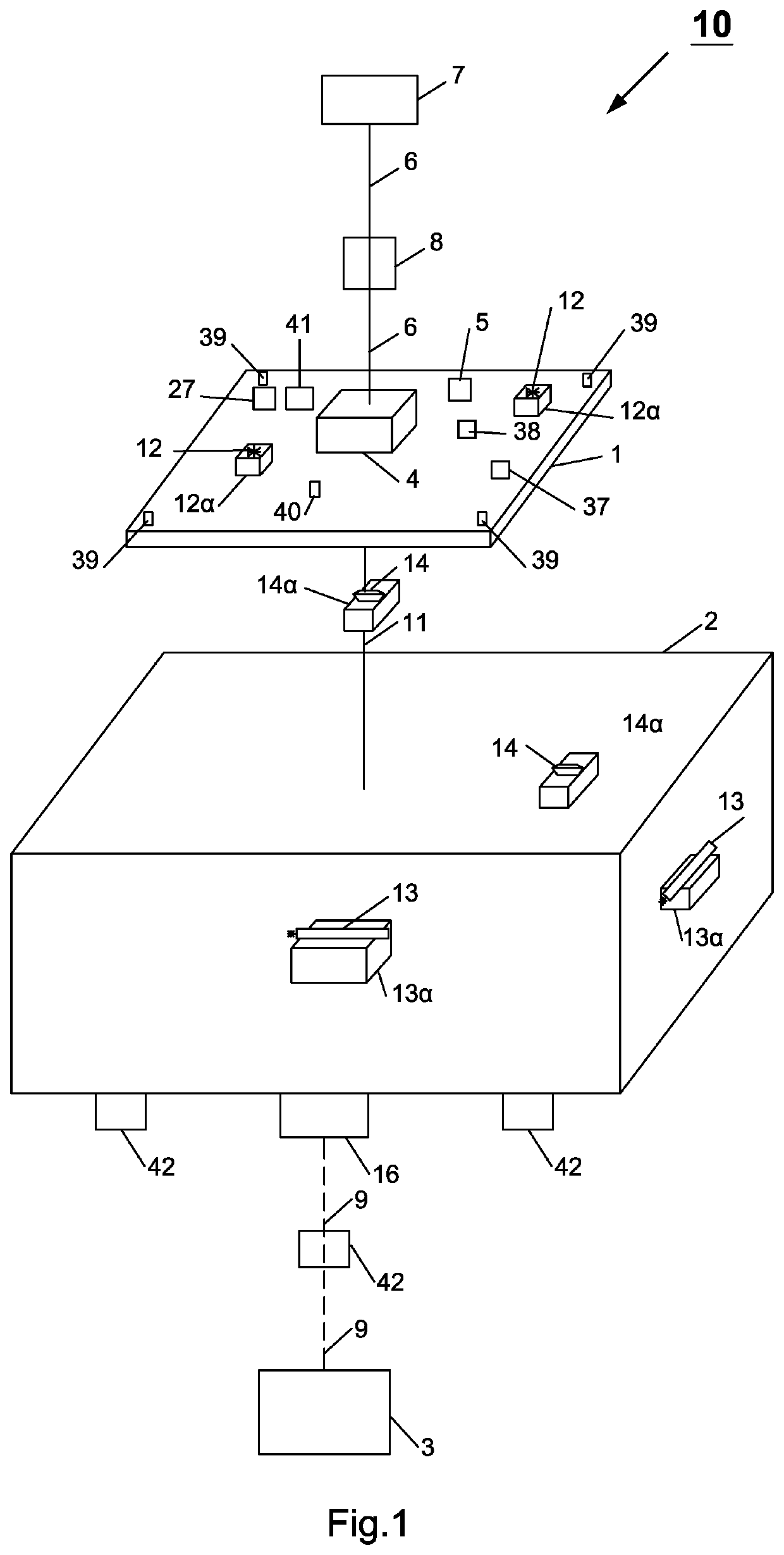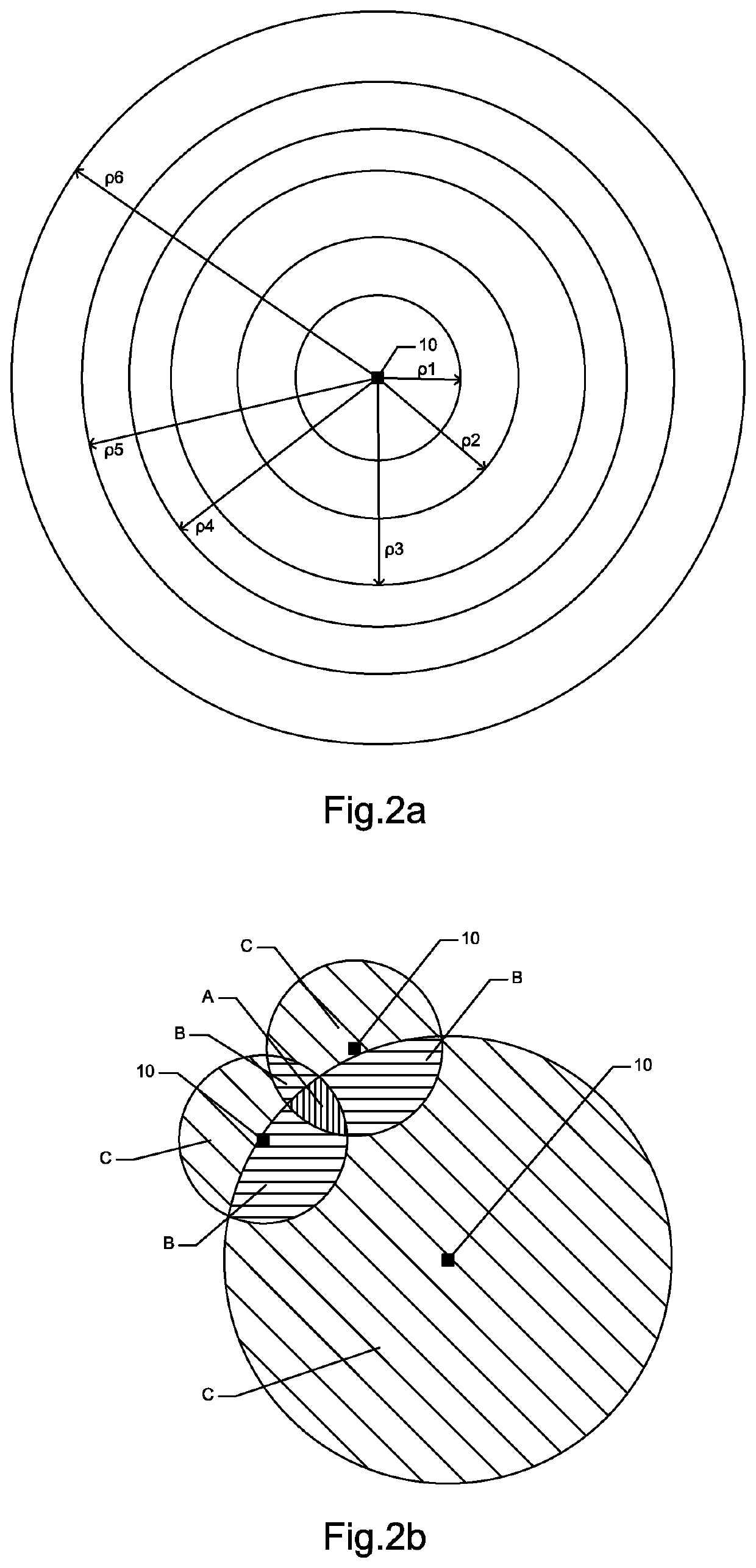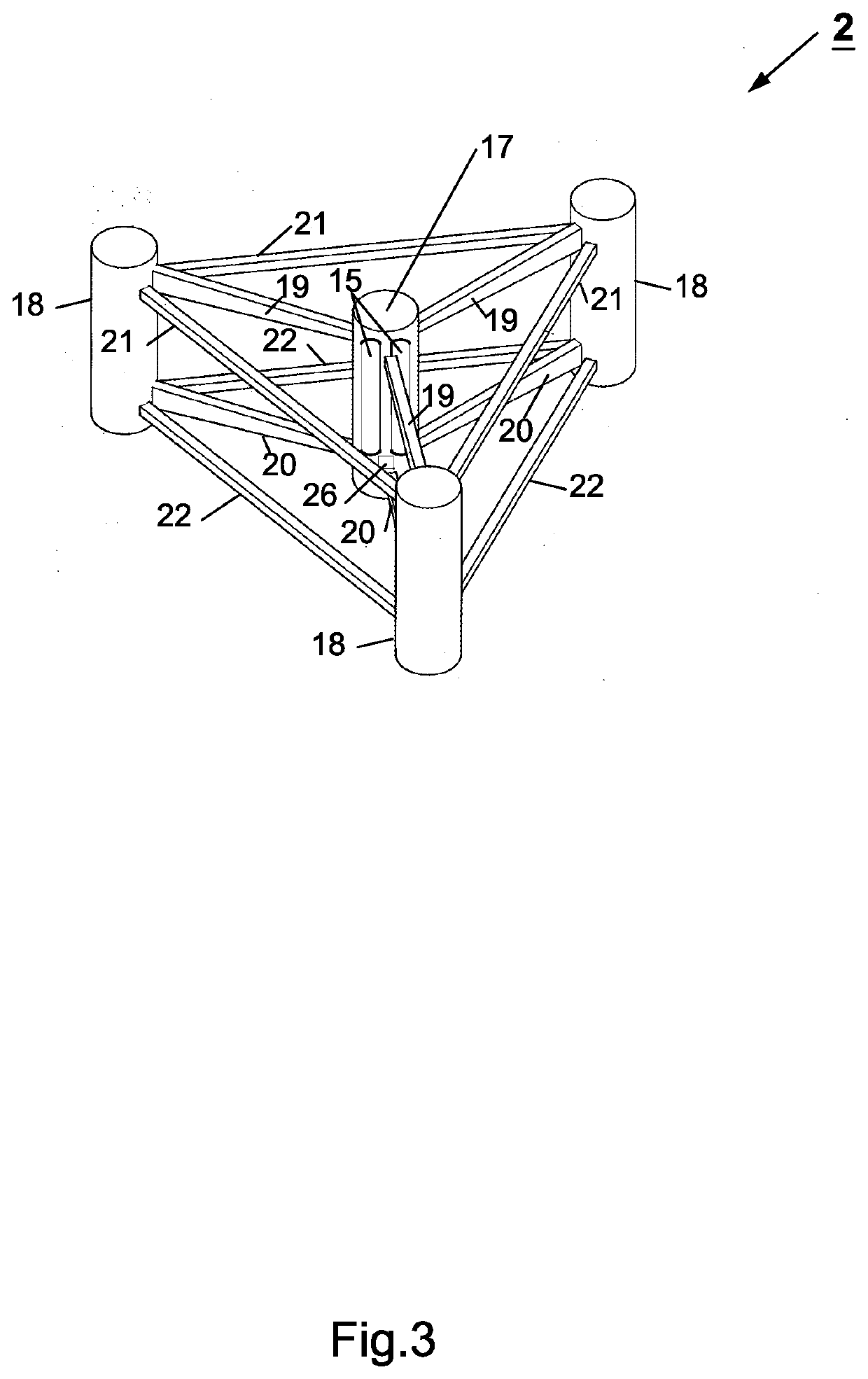Floating platform for maritime surveillance
a floating platform and surveillance technology, applied in the direction of instruments, vessel construction, and reradiation, can solve the problems of limited capacity for carrying surveillance sensor equipment, small surveillance radius, and high cos
- Summary
- Abstract
- Description
- Claims
- Application Information
AI Technical Summary
Benefits of technology
Problems solved by technology
Method used
Image
Examples
Embodiment Construction
[0026]The invention will be hereinafter described by reference to the illustrative embodiments presented in the accompanying drawings.
[0027]FIG. 1 shows an embodiment of a floating platform of the invention for the surveillance of a maritime zone. The floating platform is unmanned, autonomous and is adapted to maintain a fixed location, thereby being adapted to provide a continuous surveillance of a sea surface area and of the aerial and underwater space pertaining to this sea surface area of the maritime zone under surveillance. Continuous surveillance is being achieved since the floating platform does not need to be removed for refueling or maintenance and it may remain within the maritime zone under surveillance constantly for the entire duration of operation thereof.
[0028]The floating platform of FIG. 1 comprises a deck 1 maintained well above sea level 60 at any circumstances, a system of floaters 2 and anchorages 3 lying onto the seabed and maintaining the system of floaters 2...
PUM
 Login to View More
Login to View More Abstract
Description
Claims
Application Information
 Login to View More
Login to View More - R&D
- Intellectual Property
- Life Sciences
- Materials
- Tech Scout
- Unparalleled Data Quality
- Higher Quality Content
- 60% Fewer Hallucinations
Browse by: Latest US Patents, China's latest patents, Technical Efficacy Thesaurus, Application Domain, Technology Topic, Popular Technical Reports.
© 2025 PatSnap. All rights reserved.Legal|Privacy policy|Modern Slavery Act Transparency Statement|Sitemap|About US| Contact US: help@patsnap.com



